Reimagining the way medical device sales gets done.
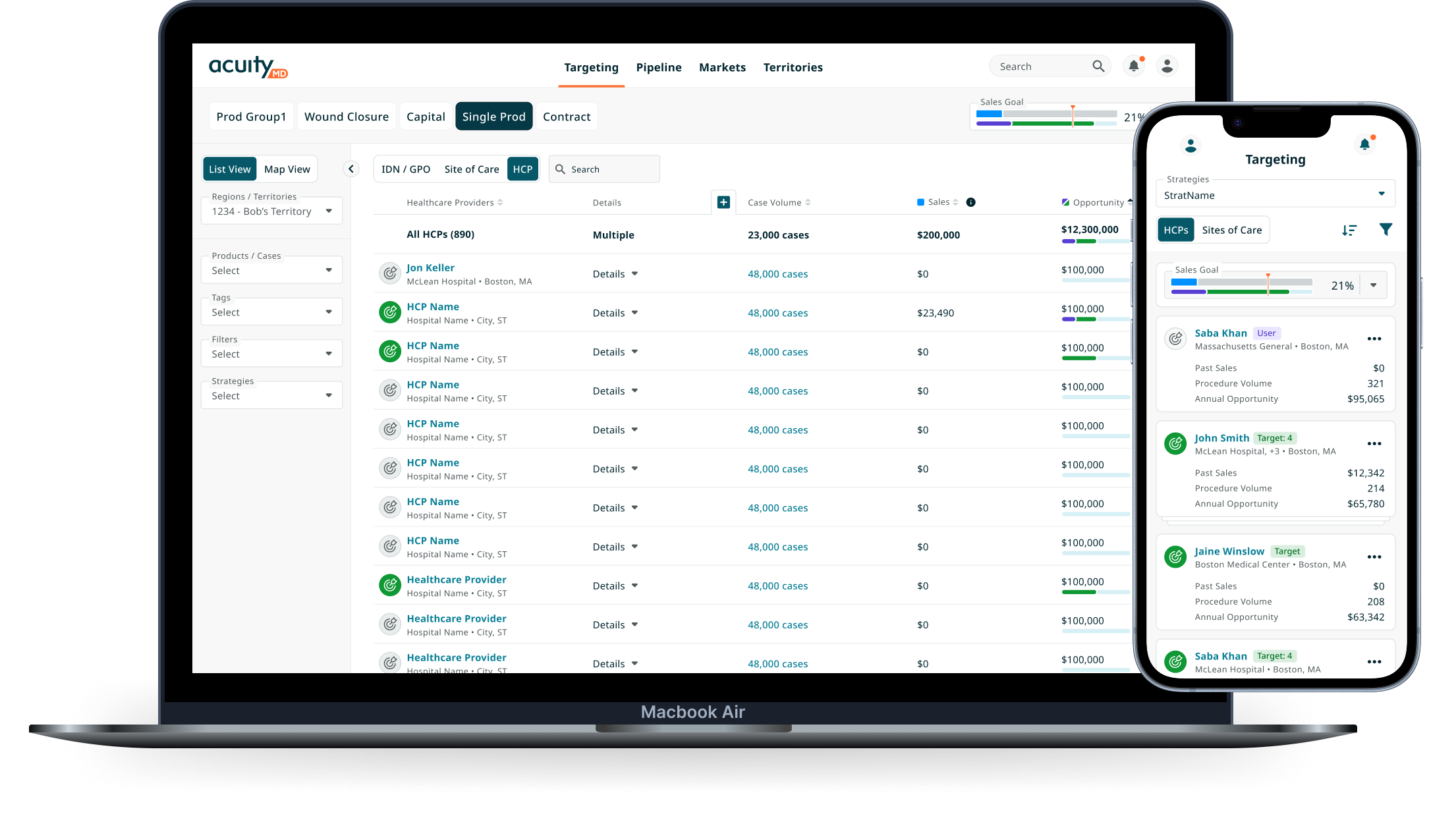

I was the first design hire at AcuityMD. When I started, the product was evolving from a simple single-page app into something much larger.
Luckily, this one was right almost from the beginning. Most decision makers were previously sales reps themselves and got it right away. “I wish I had this when I was a rep” was a pretty common response. The targeting platform had a lot of value, so while there was still work to do building that out, many of the real problems were further downstream.
One of the early issues with some customers was seeing the value of the data but not of the product. They were used to buying data from providers and wanted to know why they couldn’t do the same with us. So it was our job to change this mindset by showing the value of getting our data in the hands of all their employees.
A CRM is only as good as the data that gets entered. Unfortunately, many managers treat them like micromanagement tools, and users don’t see value in spending time on data entry. So, garbage-in is often the result, leading to unreliable data. Or worse yet, a company spends millions in a tool like Salesforce for it only to go unused.
We focused on the sales rep persona for many of our product initiatives because better business outcomes start at the local level. Typically a national sales director will create forecasts for the year and pass down new quotas. Which is given to regional managers to divvy up for each of their sales reps. And finally the sales reps who are closest to the sales process are left to find some way to hit the number they were given.

If we could get sales reps to provide more accurate and timely information, it could be better used to create more accurate forecasts and greatly help with strategy and planning at both the regional and national levels. To help the sales rep persona we needed a mobile app they could use in the field. To help:
Early on, to expand away from the targeting platform we needed to build out the supporting interface to both onboard and allow customers to self-manage their accounts. We rolled up much of this functionality into a new product section called Markets, where an account administrator could define the medical codes they wanted to track and put them into groups, and then assign those groups to their various products, in order to get accurate procedure and diagnosis volume for doctors and hospitals.
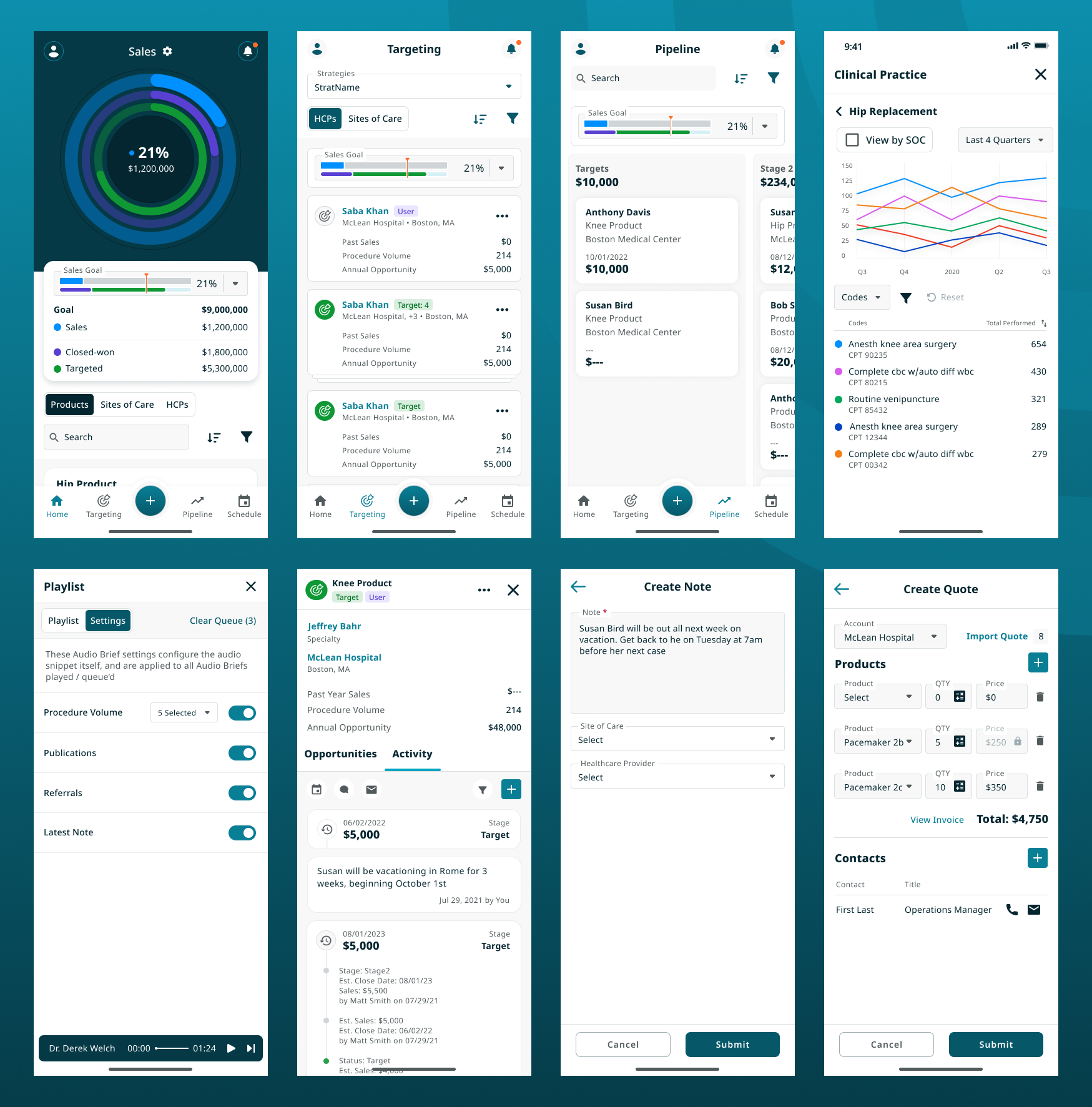
The key element that I wanted to tie into the application was quota management and attainment. Generally a sales rep's pay and performance are tied to their quarterly quota. Managers instruct and gage performance against it, and senior management use this progress for forecasting and procurement, and those numbers go all the way to the board and/or shareholders for larger companies. The data sales reps enter is super important, and tying Targeting to the user's quota is massive.

We created a way for users at every level of the organization to define, measure and track their sales quota progress with the goal of AcuityMD becoming the go to source for up-to-date sales data.

For an application that sells seats, engagement is critical, so building out the sales rep sales processes is what kept users coming back.
Finding the right opportunities
Track opportunities through the sales process
Manage meetings and sales calls
Create sales quotes for new business
Track customers after sales close
Early on, to expand away from the targeting platform we needed to build out the supporting interface to both onboard and allow customers to self-manager their accounts. We rolled up much of this functionality into a new product section called Markets, where an account administrator could define the medical codes they wanted to track and put them into groups, and then assign those groups to their various products, in order to get accurate procedure and diagnosis volume for doctors and hospitals.

In the same way we needed to allow customers to define how to track and manage volume against healthcare providers and hospitals, they also needed to manage their sales teams, which became Territories. Each sales rep has their own territory that is part of a region, which is inside of a business unit, which there can be multiple of. To save development time and give users a familiar experience, I leveraged much of the table components, creation process, and drill-down flows from Markets in the Territories module.
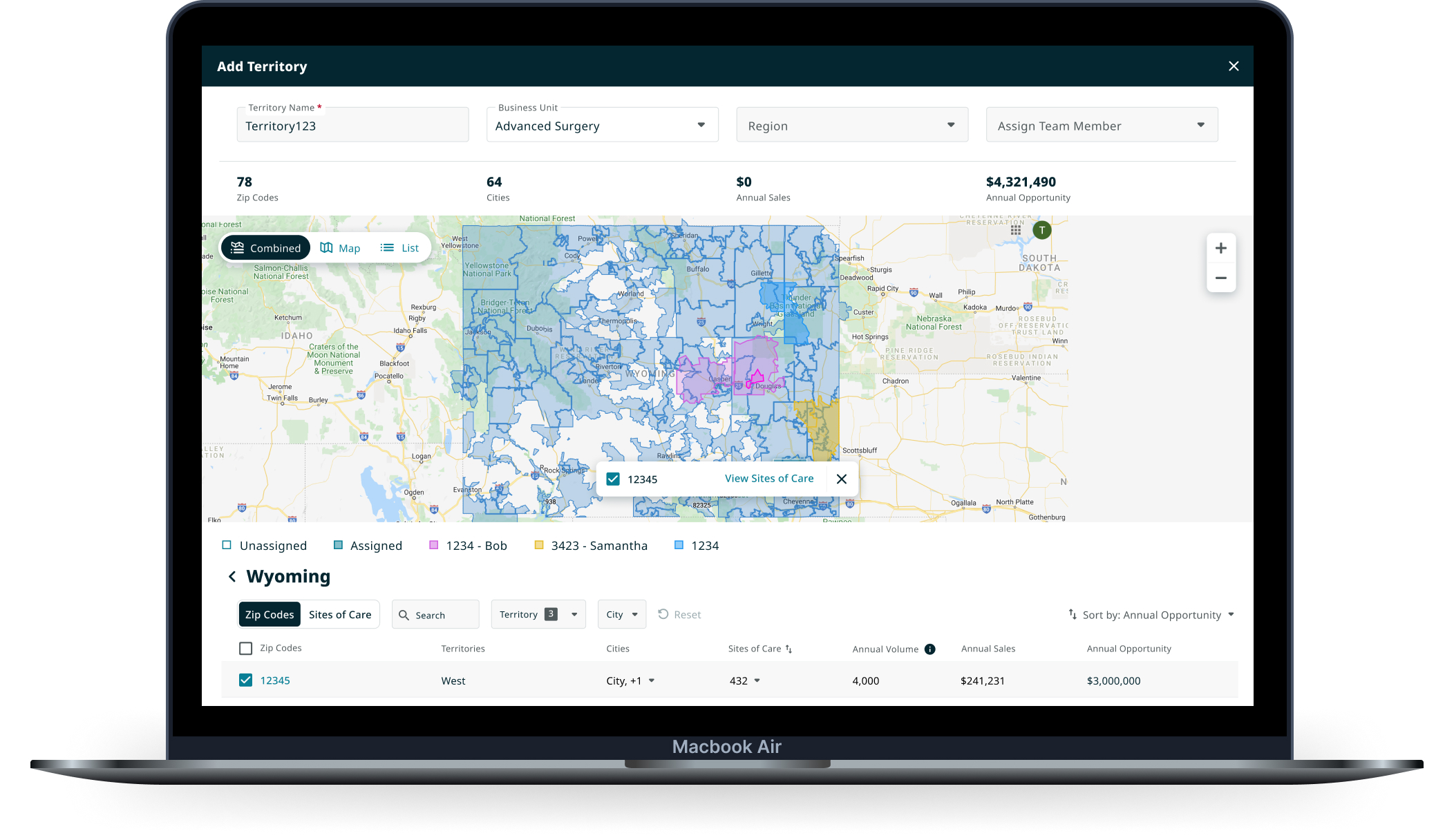
The minimum viable version of territories only included a table view but users also wanted a visual way to view, create and edit territories, especially because the initial version worked off of areas defined by zip codes, and most people don't know the natural boundaries of zip codes. We experimented with different map designs and tools to highlight and edit territories. Ultimately, users needed to be able to split out areas at a more granular level, the site of care, or specific address level, which is what we ended up getting down to.
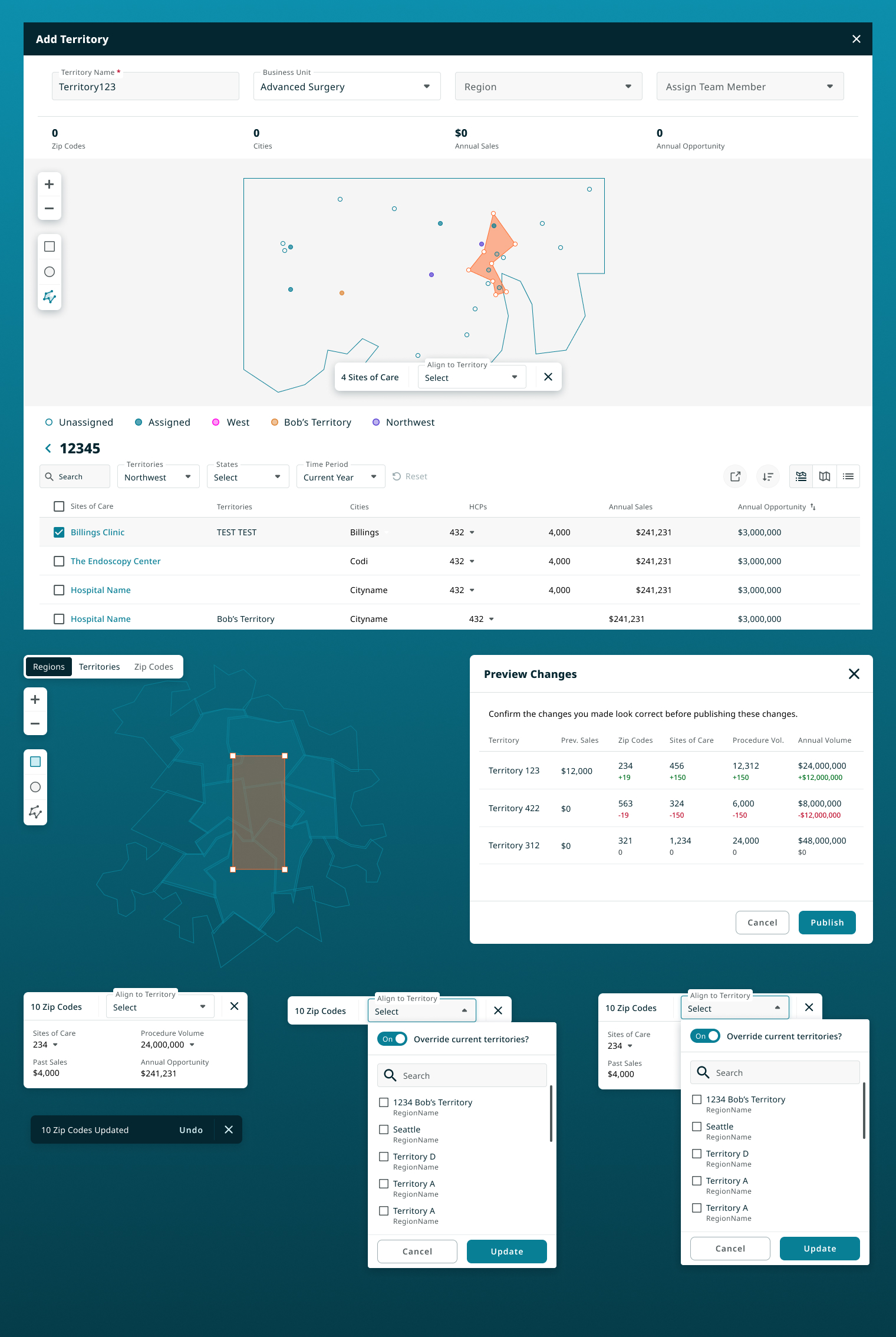
Along with building out the interface I also have been working on branding, advertising and collateral material. Here are some examples of ads I've created for internal content promotion, events we host or are going to and feature promotion.

Postcards and physical print-outs? Yes. I also designed physical collateral for sales reps, booth signage, postcards, and product pages for our trade shows.

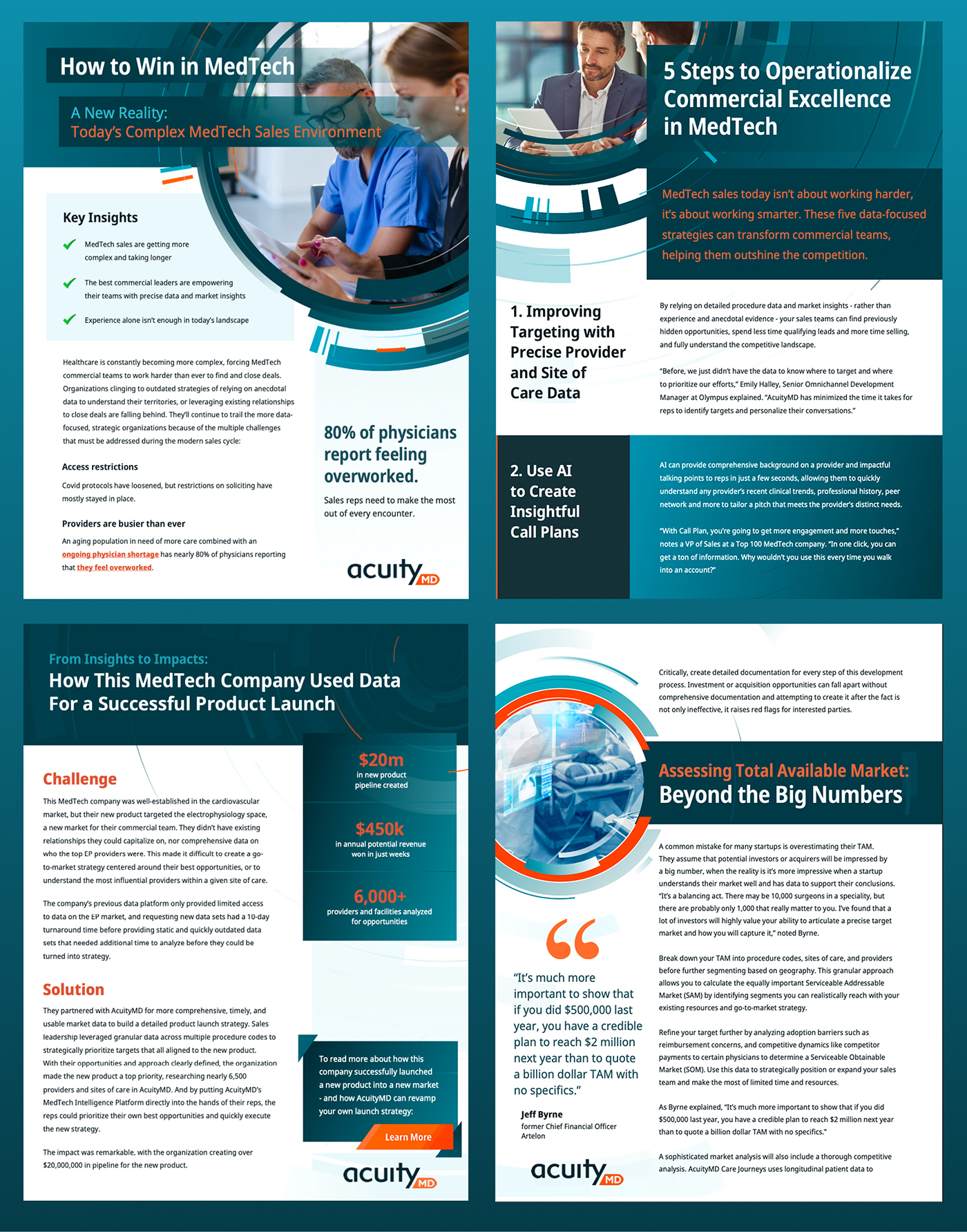
Besides working on the application, advertising and branding I also worked on all the branding and signage for the event we put on each year called Flywheel. Started with the logo and then built out all websites, slides, posters, floor decals, merch, and everything else you could think of.


